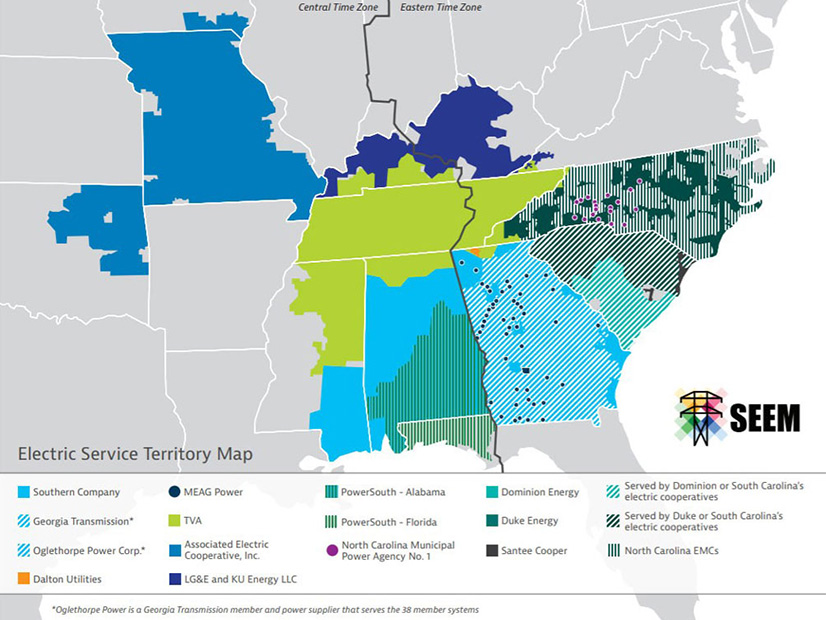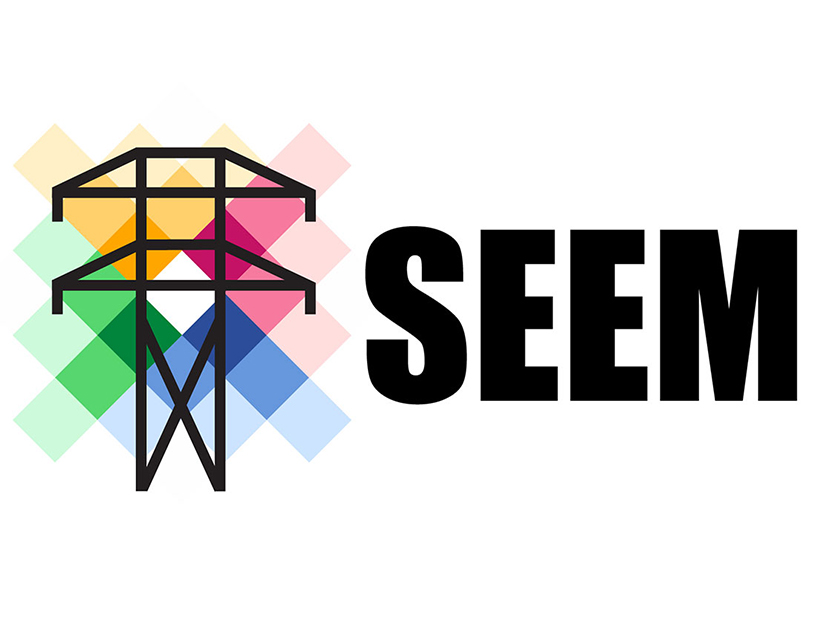A group of North Carolina lawmakers have asked FERC to convene a technical conference to “investigate wholesale market reform in the Southeast United States,” joining the chorus of critics of the proposed Southeast Energy Exchange Market (SEEM) (ER21-1111, et al.)
The SEEM proposal is backed by more than a dozen utilities and cooperatives in the Southeast, including Southern Co. (NYSE:SO), Duke Energy (NYSE:DUK) and the Tennessee Valley Authority. Sponsors claim the planned expansion of bilateral trading in 11 Southeastern states will reduce trading friction by introducing automation, eliminating transmission rate pancaking, and allowing 15-minute energy transactions. Proponents also claim the market will promote the integration of renewable resources such as wind and solar.
In a letter dated March 15 but filed on Wednesday, the 17 members of the state House of Representatives — all Democrats — said the SEEM sponsors “have provided no evidence that the proposed arrangement will lower energy prices, increase the adoption of renewable energy, or improve system reliability.”
“In fact, the proposal limits independent renewable energy producer participation, decreases already limited transparency in the utilities’ operation, and may increase the utilities’ ability to harm other market participants,” the letter said.
Lawmakers asked that, “regardless of [their] decision” on SEEM, commissioners call a joint federal-state technical conference aimed at:
- determining the SEEM proposal’s impact on customer bills and renewable energy;
- determining whether all market participants will be able to “compete on a level playing field” under SEEM;
- assessing the potential benefits of “a reformed wholesale market that goes beyond the SEEM proposal” (examples include an independently operated RTO or energy imbalance market);
- comparing the costs and benefits of the SEEM proposal to an RTO or EIM;
- determining whether implementing SEEM would delay “broader wholesale reforms”; and
- identifying how “the benefits of broader wholesale reforms can be realized in the region while preserving or enhancing state jurisdiction and prerogatives.”
SEEM Criticism Continues
SEEM members have been pushing FERC for a speedy decision on their proposal. In their response to the commission’s second deficiency letter earlier this month, the utilities requested a shortened comment period and approval of the SEEM plan by next month. (See SEEM Members Push for FERC’s Decision on Market Proposal.)
The proposal’s supporters took FERC’s “limited” second deficiency letter — comprising only three questions, compared with 12 in the commission’s first such response — as a sign that FERC is moving closer to approval. But critics of SEEM have continued to push back against the planned market expansion, uniting around the request for a conference that SEEM members have urged the commission to dismiss. (See Southeast Utilities Urge FERC Action on SEEM.)

One alliance of environmental groups calling themselves “Public Interest Organizations” (PIOs) has been particularly active, with multiple filings castigating the SEEM proposal for lacking transparency and creating opportunities for monopolistic behavior. (See SEEM Critics Repeat Call for Technical Conference.) The PIOs repeated their accusations in a filing last week responding to SEEM members’ latest deficiency response.
A number of other groups also chimed in. The trade organizations Advanced Energy Economy and Renewable Energy Buyers Alliance, for example, submitted a joint filing this week echoing the PIOs’ concerns about transparency and supporting the idea of a technical conference.
D.C.-based think tank R Street Institute expressed concern on Monday about the proposal’s lack of an “independent market monitor that is not answerable to the SEEM board” and asked that FERC require that the proposal be modified to account for such a position. Failing such changes, R Street contends that SEEM “may actually stifle” the goal of “expanding market opportunities to the Southeast.” A technical conference could help the commission explore alternative options for the region, R Street contends.
Another trade group, the Solar Energy Industries Association, complained that its members — along with other stakeholders — had no input into the SEEM proposal, and that proponents’ responses to FERC’s deficiency letters had shown that “it is no longer the case that the SEEM agreement may not be just and reasonable; the SEEM agreement is not just and reasonable.” SEIA asked commissioners to reject the SEEM proposal and call a technical conference to solicit “consideration of all relevant facts and circumstances, including by stakeholders most impacted.”



